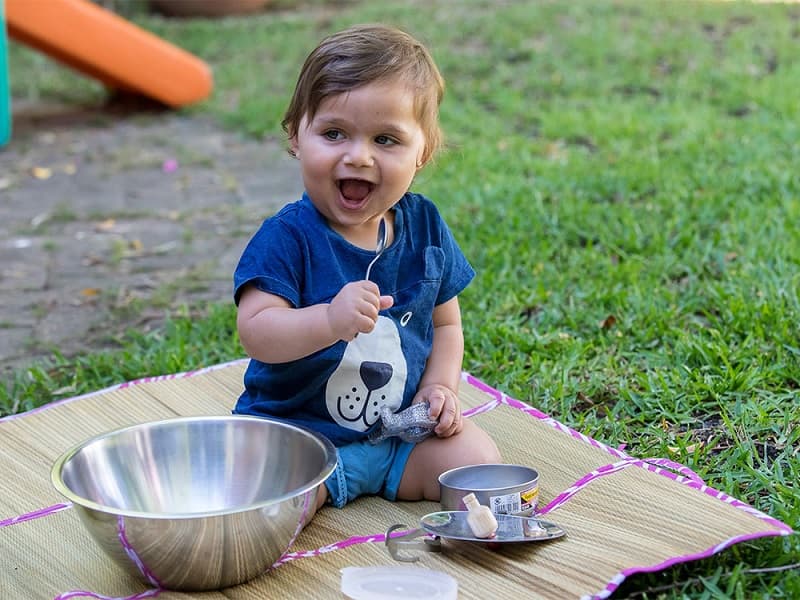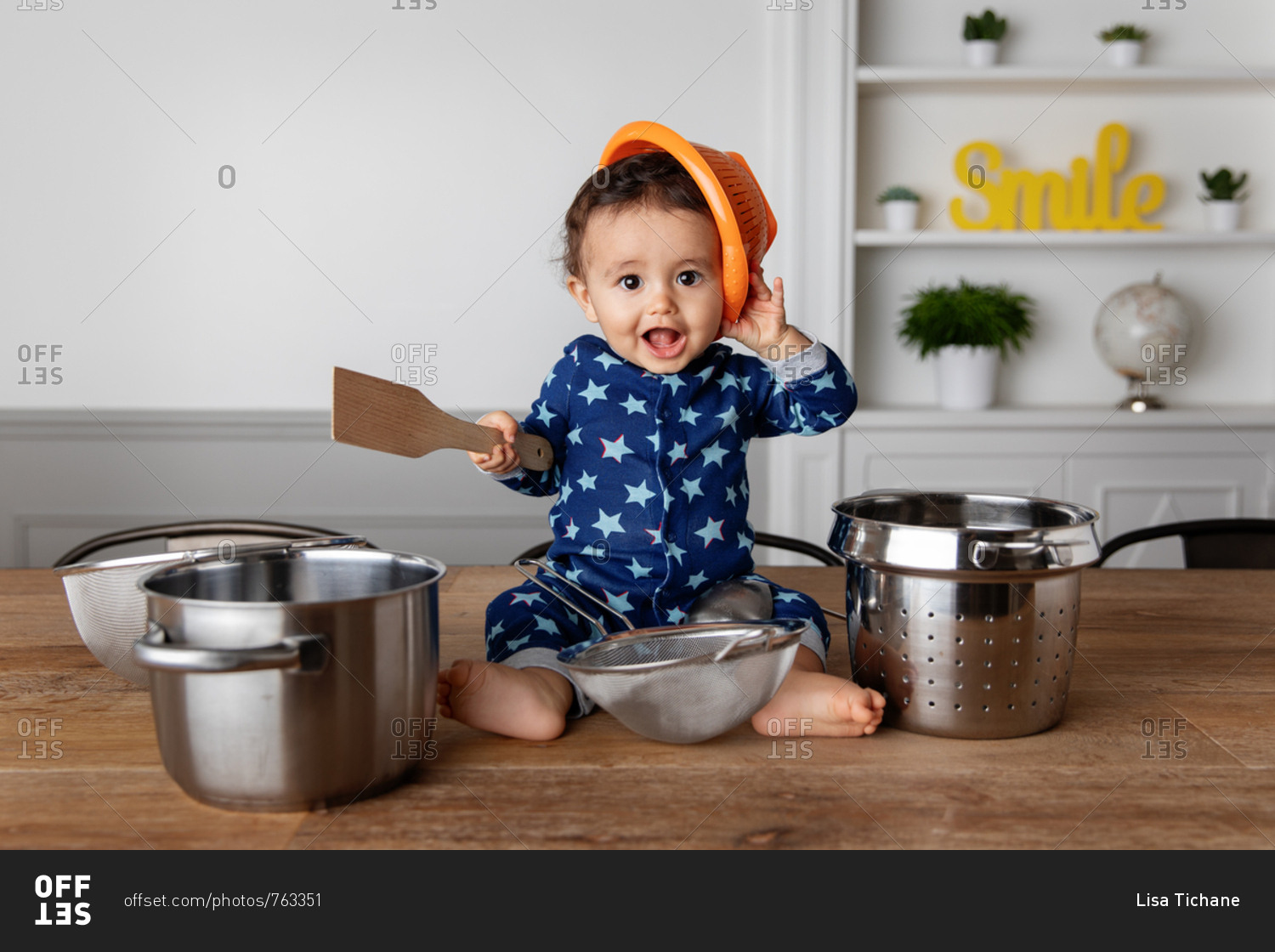Playing pots and pans is not just about making noise; it's an incredible way to spark creativity, enhance cognitive skills, and bring joy to both kids and adults alike. Imagine this: your kitchen transforms into a mini concert hall where little hands drum away on pots while spoons become the ultimate drumsticks. It’s simple, it’s free, and it’s incredibly fun! So, why not turn that pile of kitchenware into a symphony of laughter and learning?
Now, you might be wondering, "Why should I let my kids play with pots and pans?" Well, buckle up because there's more to this activity than meets the eye. Playing pots and pans isn't just about noise—it's about creating an environment where creativity thrives. It’s about encouraging kids to explore sounds, rhythms, and even teamwork. Plus, it’s a great way to bond as a family without spending a dime.
But hey, let’s not forget the adults in the room. Whether you're a parent, a teacher, or simply someone who loves a good laugh, playing pots and pans can be a fun way to unwind after a long day. So, grab those pots, shake those pans, and let the music begin!
Read also:Hthaze Positions Reviews Ariana Grande A Deep Dive Into The Queen Of Pops Career
Why Playing Pots and Pans is a Hit
If you’ve ever seen a child bang on a pot with a spoon, you know how infectious the joy can be. But what makes playing pots and pans such a big deal? For starters, it’s accessible. Everyone has kitchenware at home, so there’s no need to buy expensive toys or instruments. Plus, it’s a great way to teach kids about rhythm, sound, and even basic science concepts like vibration and resonance.
Let’s break it down:
- It’s affordable—no fancy gadgets required.
- It encourages creativity and self-expression.
- It’s a fantastic sensory experience for little ones.
- It’s a bonding activity for families.
And let’s not forget the educational benefits. Playing pots and pans can help kids develop fine motor skills, improve hand-eye coordination, and even enhance their understanding of cause and effect. Who knew banging on a pot could be so beneficial?
How to Get Started with Playing Pots and Pans
So, you’re ready to dive into the world of kitchen percussion? Great! Here’s how you can get started:
Gather Your Instruments
First things first, raid your kitchen cabinets. Look for pots, pans, mixing bowls, and anything else that makes a good sound when tapped. Don’t forget the "drumsticks"—spoons, ladles, or even wooden chopsticks work perfectly. The more variety you have, the more fun it’ll be!
Set the Stage
Once you’ve gathered your instruments, clear a space in your kitchen or living room. Lay out a blanket or towel to muffle the noise a bit (trust me, your neighbors will thank you). Now, it’s time to let the creativity flow!
Read also:Bl00dyh4nd Age The Ultimate Guide To Understanding The Phenomenon And Its Impact
Encourage Experimentation
Let your kids experiment with different sounds. What happens when they tap lightly versus hard? How does the sound change when they use a wooden spoon instead of a metal one? Encourage them to explore and discover the world of sound on their own.
The Educational Benefits of Playing Pots and Pans
Playing pots and pans isn’t just fun—it’s also a powerful learning tool. Here are some of the key benefits:
Developing Fine Motor Skills
When kids bang on pots and pans, they’re using their hands and fingers in new ways. This helps develop fine motor skills, which are essential for tasks like writing, drawing, and buttoning clothes.
Enhancing Cognitive Abilities
Playing pots and pans encourages kids to think critically. They learn about cause and effect (e.g., “If I hit the pot harder, it makes a louder sound”) and begin to understand basic scientific concepts.
Promoting Creativity
Music is a form of self-expression, and playing pots and pans gives kids a chance to explore their creativity. They can create their own rhythms, compose simple "songs," and even put on a mini concert for the family.
Tips for Making the Most of Playing Pots and Pans
Now that you know the benefits, here are some tips to make the experience even better:
- Set boundaries: Let kids know when and where they can play with pots and pans to avoid disrupting others.
- Encourage teamwork: If you have multiple kids, encourage them to play together and create a "band."
- Experiment with different materials: Try using plastic containers, glass bowls, or even empty cans to see how the sounds differ.
Remember, the goal is to have fun and learn in the process. So, don’t be afraid to get a little messy and let your inner musician shine!
Playing Pots and Pans for Adults: Yes, It’s a Thing!
While playing pots and pans is often associated with kids, adults can get in on the fun too. Whether you’re looking for a stress-relieving activity or just want to bond with your family, there’s no reason why grown-ups can’t enjoy a little kitchen percussion.
Stress Relief through Music
Making music, even with pots and pans, can be incredibly therapeutic. It allows you to express yourself in a way that words sometimes can’t. Plus, it’s a great way to let off steam after a long day.
Family Bonding
Playing pots and pans together as a family can create lasting memories. It’s a chance to laugh, learn, and connect with each other in a fun and meaningful way.
Common Questions About Playing Pots and Pans
Still have some questions? Here are a few common ones:
Is Playing Pots and Pans Safe?
Absolutely! Just make sure to supervise young children and avoid using sharp objects as "drumsticks." With a little caution, playing pots and pans is a safe and enjoyable activity for everyone.
Can It Be Used in a Classroom Setting?
Definitely! Many teachers use playing pots and pans as a fun way to teach music, science, and teamwork. It’s a great hands-on activity that keeps kids engaged and excited to learn.
Playing Pots and Pans Around the World
Did you know that playing pots and pans isn’t just a Western phenomenon? In many cultures, kitchenware is used as makeshift instruments during celebrations and festivals. From Brazil’s street samba to India’s dandiya raas, people all over the world have found creative ways to make music with everyday objects.
So, next time you’re feeling adventurous, why not try incorporating some global rhythms into your pots and pans session? You might just discover a new favorite sound!
Conclusion: Let the Music Begin
Playing pots and pans is more than just a fun activity—it’s a way to connect, learn, and grow. Whether you’re a parent, a teacher, or simply someone who loves a good jam session, there’s something for everyone in this simple yet powerful pastime.
So, what are you waiting for? Grab those pots, shake those pans, and let the music begin. And don’t forget to share your experiences with others—after all, the more the merrier!
Table of Contents
- Why Playing Pots and Pans is a Hit
- How to Get Started with Playing Pots and Pans
- The Educational Benefits of Playing Pots and Pans
- Tips for Making the Most of Playing Pots and Pans
- Playing Pots and Pans for Adults
- Common Questions About Playing Pots and Pans
- Playing Pots and Pans Around the World
- Conclusion


